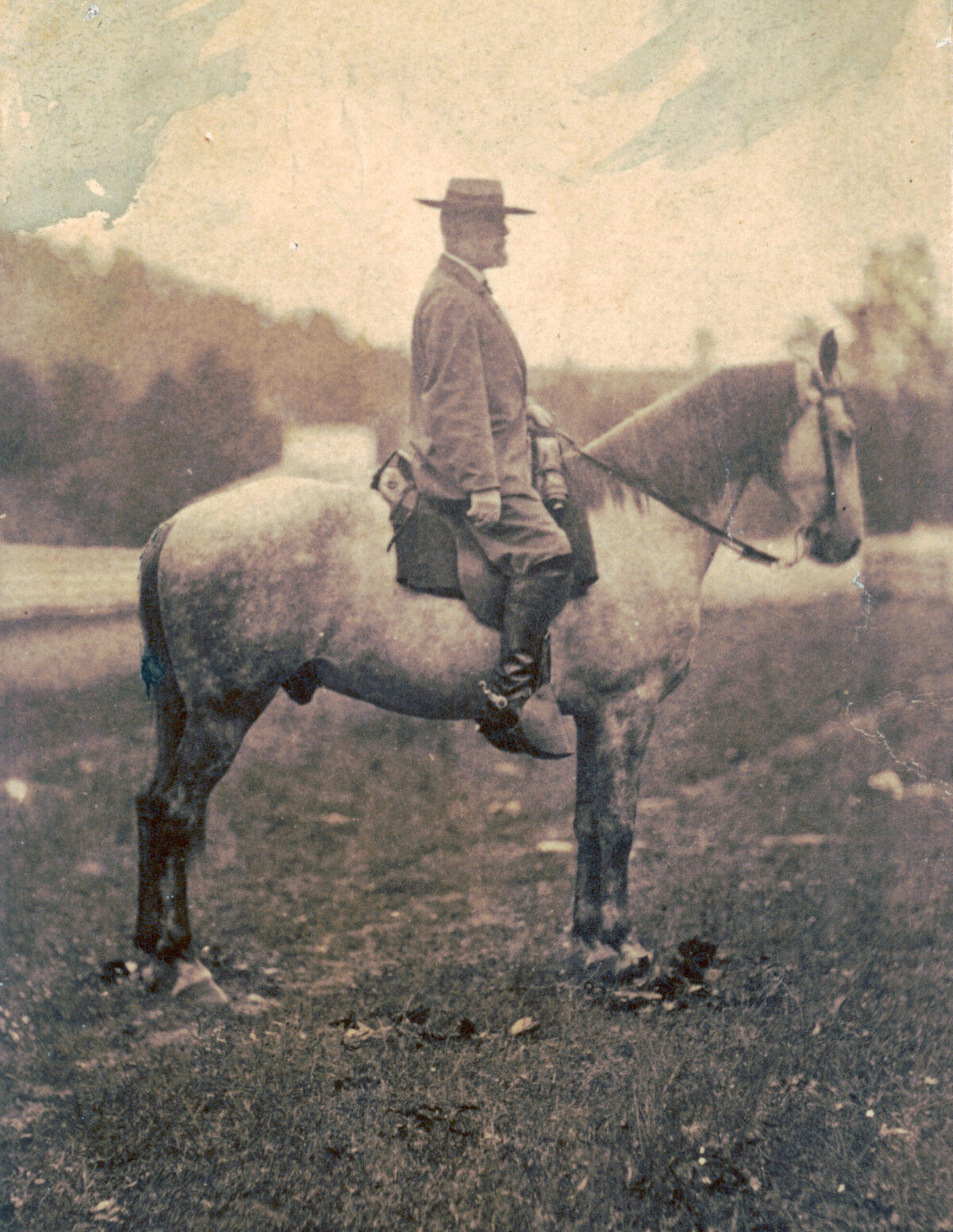General Robert E. Lee’s favorite mount was revered almost as much as his master. The American Saddlebred gelding—in Lee’s words “a Confederate grey”—was born in the lush Greenbrier Valley of present-day West Virginia and displayed the best qualities of the breed: well muscled and spirited with an easy gait.
Traveller accompanied Lee into his postwar career as president of Washington College, now Washington and Lee University, in Lexington, Va. Souvenir hunters pulled so many hairs from the horse’s mane and tail that Lee remarked, “He is presenting the appearance of a plucked chicken.” The two became a familiar sight on campus and off, frequently riding through the Blue Ridge hills of Rockbridge County.
When Lee died in 1870, Traveller followed the hearse in the funeral procession, his bridle and saddle swathed in mourning crepe and Lee’s boots facing backward in the stirrups, the sign of a fallen soldier. The general was buried on the college grounds in the family crypt beneath Lee Chapel. Traveller died the following year of tetanus; his remains are now interred just outside the chapel. The United Daughters of the Confederacy marked Traveller’s grave with a plaque where apples and carrots are still often left as an offering to, as poet Stephen Vincent Benet immortalized him, one of the “jewels of the horseman”:
They bred such horses in Virginia then,
Horses that are remembered after death
And buried not so far from Christian ground
That if their sleeping riders should arise
They could not witch them from the earth again
And ride a printless course along the grass….
Originally published in the February 2006 issue of Civil War Times.





